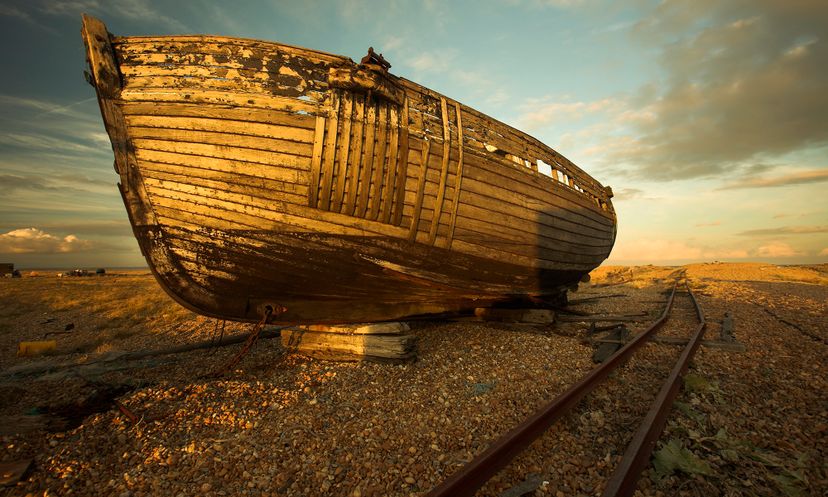

Daniel McLise/Getty Images
Depiction of Noah and his family after the Great Flood.
See pictures of storms.
One of the oldest stories in the world, the tale of Noah and his ark has crossed oceans and continents over millenniums. Versions float around in nearly every human culture, and Christianity, Islam and Judaism share the overarching plot points of a man, a flood and animals marching two by two. But for all of these similarities, whether the tale traces back to fact remains contentious among religious and scientific scholars alike.
As the story goes, God told Noah to build an enormous wooden boat and load a male and female of every animal species into it. Then God made it rain, flooding the entire earth with water to swallow up the wicked.
Before we dive into the question of whether Noah and his ark existed, let's first ask if there's any evidence of ancient worldwide flooding. Scientifically speaking, such a flood would be impossible. It would take more than five times the amount of water in the oceans and atmosphere to submerge the earth up to its mountaintops [source: Discovery Channel and BBC]. And if that amount of water entered the atmosphere, the resulting pressure would crush people's lungs [source: Discovery Channel and BBC].

But that doesn't mean the story is bogus -- just maybe not subject to literal interpretation. Instead, geologists William B.F. Ryan and Walter C. Pitman from Columbia University postulate that a great flood resulted from the rapid water level rise in the Black Sea as the last Ice Age tapered off around 5600 B.C. [source: Wilford].
Calling it the "Noah's Flood Hypothesis," the geologists theorized that water from melting ice caps overwhelmed the Mediterranean Sea, breaking through the Bosporus Strait to the Black Sea with Herculean force and flooding more than 60,000 sÂquare miles (96,560 kilometers) of land [source: Wilford]. In 2007, other researchers found evidence that a melting ice cap from Greenland boosted global sea levels 4.5 feet (1.4 meters) between 8740 B.C. and 8160 B.C., causing people to migrate toward Europe to escape flooding in the same region [source: Turney and Brown].
ÂBut many marine geologists remain unconvinced of this theory, pointing to their own evidence of a more gradual Black Sea growth around 10,000 B.C. to 9,000 B.C. [source: Alsu et al.]. ScholaÂrs also think that the story links to the flooding of the Tigris and Euphrates rivers and point out that the hypothesis leaves no room for the characteristic rain. On the next page, we'll examine Noah as a person more closely to find out why this river theory may be correct.
Advertisement